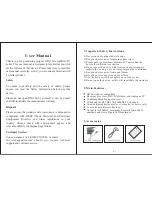NXP Semiconductors
AN11740
PN5180 Antenna design
AN11740
All information provided in this document is subject to legal disclaimers.
© NXP B.V. 2018. All rights reserved.
Application note
COMPANY PUBLIC
Rev. 1.1 — 19 June 2018
345311
40 of 62
(1) ITVDDloaded > ITVDDunloaded
Fig 35. Antenna impedance example with smart phone loading
As can be see, in this case of metal loading the ITVDD must increase, since the overall
impedance gets lower:
Ω
≈
=
19
Z
Z
unloaded
Ω
=
+
≈
=
3
.
18
76
.
12
14
.
13
2
2
Z
Z
loaded
This behavior needs to be checked carefully, directly measuring the ITVDD.
4.2.2.3 “Active” loading
The impedance measurement as shown above is always done with limited power
(typically 0dBm), so especially the ReferencePICC shows a slightly different behavior
than in the real test case. Therefore the “passive” loading measurement can only show
the trend of loading and detuning, but does not allow a 1:1 calculation of the related
ITVDD out of the impedance.
So finally, the loading must be tested under real operating conditions, i.e. the PN5180
must be powered and the carrier must be enabled. Then the ITVDD must be measured
under the different loading conditions (see above). In no case the ITVDD is allowed to
exceed the specification limit.
4.3 Antenna for all NFC modes
The antenna design to support all NFC modes is done in the same way as described in
section 4.2, except the PLM connection, using the CANT1 and CANT2. The two related
pins of the PN5180 (ANT1 and ANT2) are used to drive the passive load modulation
(PLM) in card emulation mode or when the PN5180 is used as passive target.


















